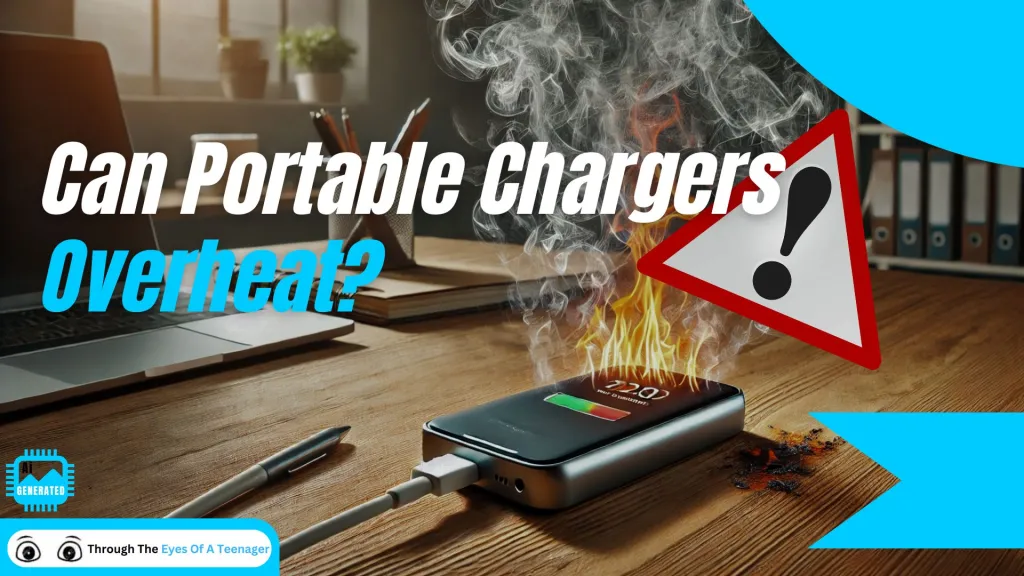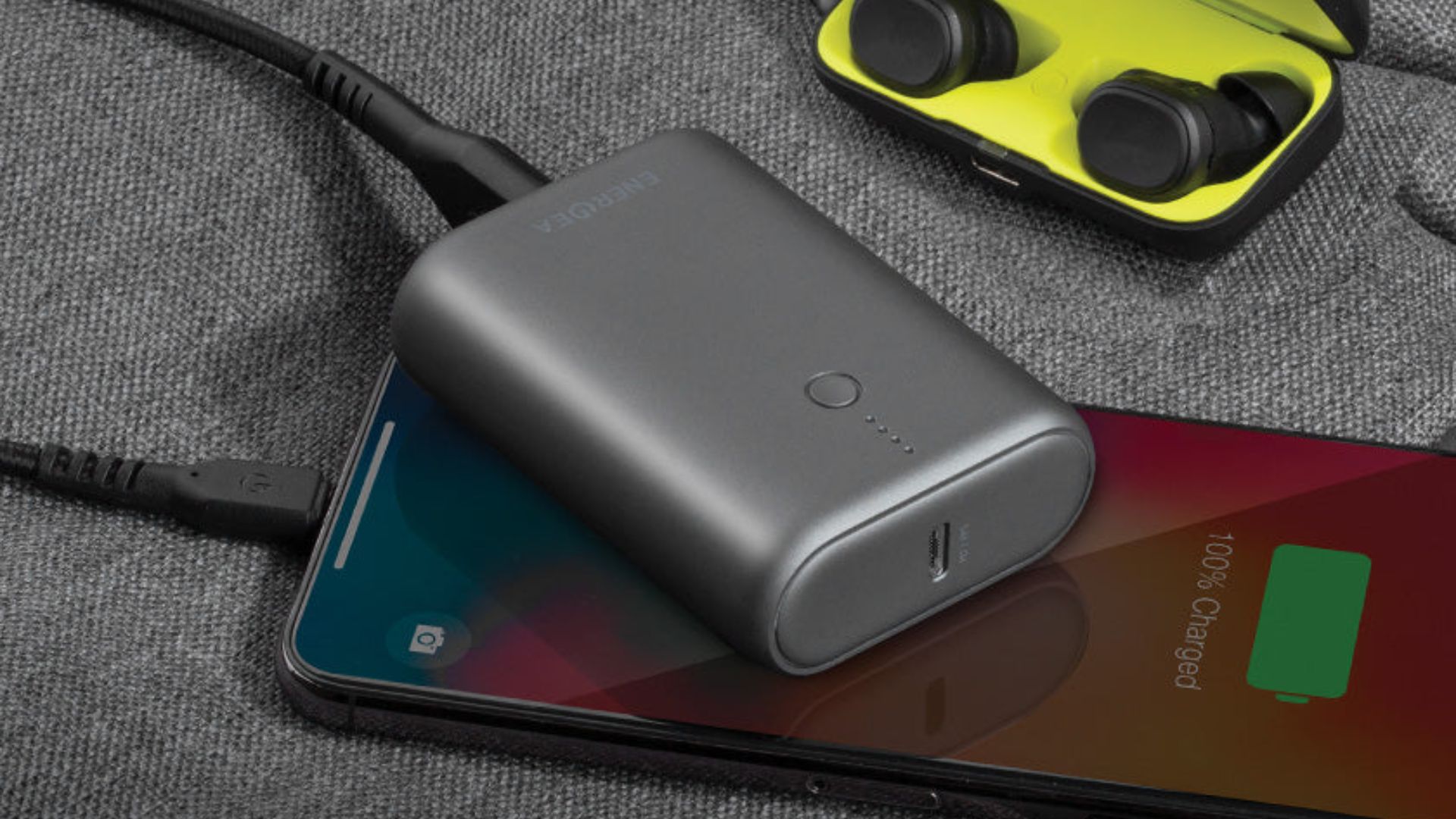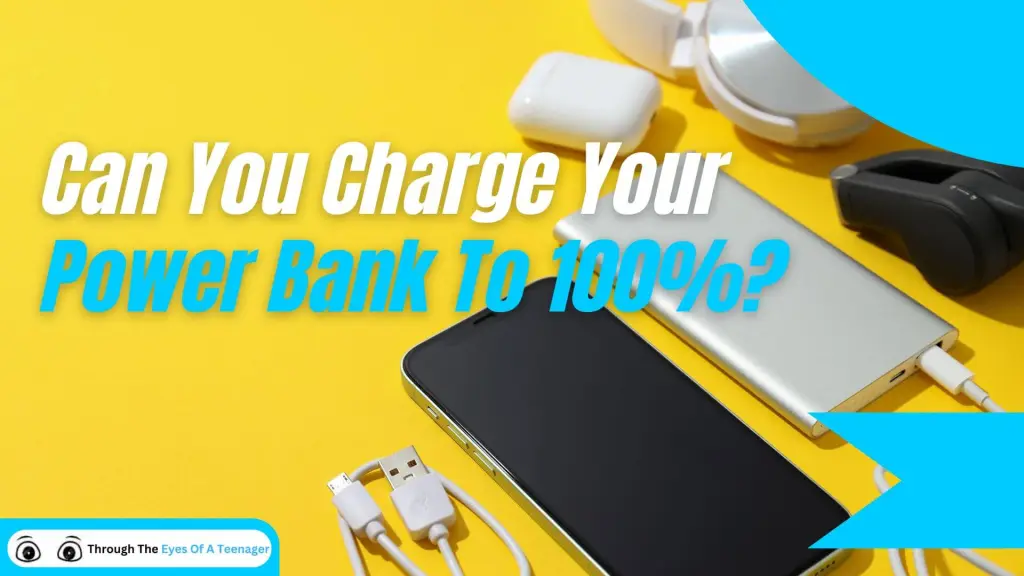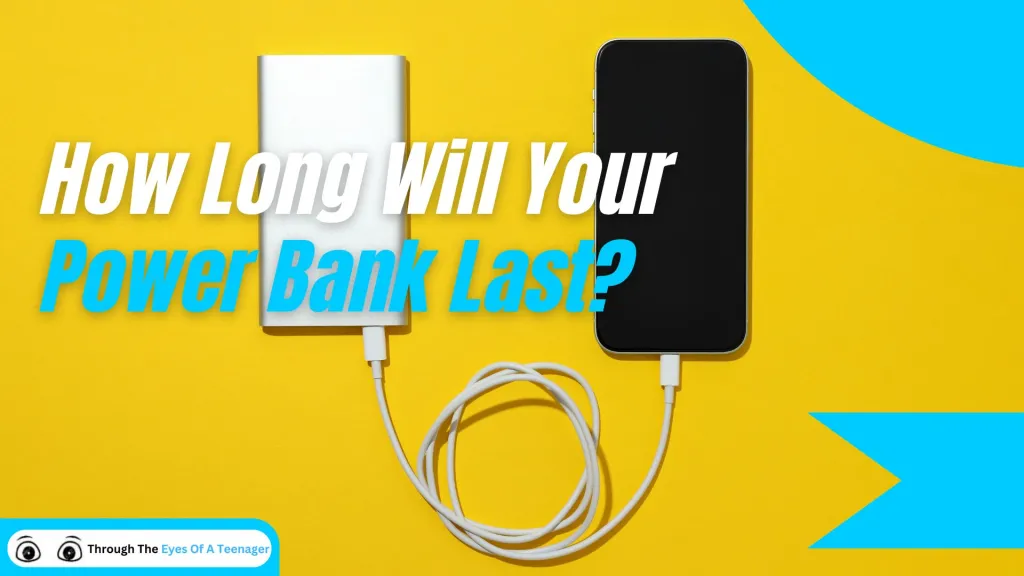If you’re anything like me, you probably never leave the house without a portable charger. No matter if I’m out on the go, traveling, or just away from home, I do my best to avoid that dreaded low-battery warning.
In 2024, with all the advancements in battery technology, you might still find yourself wondering: Are portable chargers really safe? Could your charger be a ticking time bomb in your pocket?
Quick Summary:
- Portable chargers, or power banks, are rechargeable batteries designed to store energy for charging USB devices on the go.
- Safety concerns arise from overheating, cheap knockoffs, or damaged units, but risks are low with proper quality chargers.
- Proper care, like avoiding overcharging and using reputable brands, ensures safe and reliable performance.
Table of Contents:
Understanding Portable Charger Overheating: The Basics
The basics of portable chargers overheating is that their internal temperature exceeds safe limits and starts to get overly hot causing sometimes causing a fire.
This is very often due to fast charging, high capacity, or external factors like heat exposure. Low-quality or older models and fast chargers are more prone to overheating due to reduced efficiency or lack of thermal protection.
What Does Overheating Mean?
Overheating occurs when a portable charger’s internal temperature exceeds its safe operating limits. This temperature varies depending on the device, but in general to function safely the temperature has to be between 32°F and 113°F (0°C to 45°C). Temperatures above this range can heavily degrade the internal components and increase safety risks.

Heat in a charger primarily comes from the battery. As energy is stored or discharged, a small amount of heat is generated.
Normally, this heat dissipates harmlessly. But in certain conditions—like extended use or exposure to direct sunlight—can prevent the charger from cooling, which leads to overheating.
Why Do Portable Chargers Heat Up?
Heat is a natural by-product of energy transfer. When charging your device, the power bank converts stored energy into a usable form, a process that inherently generates warmth. So there’s always going to be some heat generated when using a portable charger. However, there are several factors that can amplify this heat:
- Charging Speed: Fast-charging models generate more heat than standard chargers.
- Capacity: High-capacity chargers store more energy, which can increase heat output.
- External Conditions: Hot weather or enclosed spaces reduce a charger’s ability to cool itself.
Get all the latest post on through the eyes of a teenager straight in your inbox.
Subscribe to stay updated, it’s free!
Types of Chargers Prone to Overheating
While overheating can affect any charger, there are certain types that are more at risk than others.
As you can see in the table below, it’s mainly chargers that aren’t high quality (anymore). This just shows how important it is to get a good quality portable charger that will last.
| Type of Charger | Reason for Overheating |
|---|---|
| Low-Quality Chargers | Cheaper models often lack thermal protection, making them more susceptible to overheating. |
| Older Chargers | Over time, the battery’s efficiency decreases, which can lead to excessive heat buildup. |
| Fast-Charging Models | Fast-charging generates significant heat, especially during prolonged use. |
Warning Signs of Portable Charger Overheating
Warning signs of portable charger overheating include excessive heat, unusual odors, physical deformation like bulging, poor performance, and audible sounds such as hissing or popping. These symptoms indicate potential internal damage or malfunction and should never be ignored.

Spotting these warning signs early can prevent damage and ensure your safety. So here’s everything you need to know about them:
1. Excessive Heat
A portable charger should feel warm during use, but it should never become uncomfortably hot to touch. If it does, stop using it immediately. Then get it checked out or just safely dispose of it at a local e-waste recycle center.
2. Unusual Odors
A burning or chemical smell is a major warning sign. It often indicates internal damage to the battery or other components. This is no joke, if this happens don’t ever try and touch it. The smell can indicate chemicals which could burn through your skin. Instead use gloves if you need to touch it and get rid of it as soon as possible.

3. Physical Deformation
Warped or discolored exteriors suggest the charger has been exposed to excessive heat. Bulging or swelling is particularly concerning, as it may indicate an impending failure.
Here’s everything you should be looking out for:
- Warping
- Discoloration
- Bulging or swelling
- Cracks
- Leaking substances
4. Poor Performance
If your charger takes longer than usual to charge devices or drains quickly, overheating could be compromising its functionality.
5. Audible Sounds
Hissing, popping, or crackling sounds are clear signs of a malfunction. If you hear these, stop using the charger immediately.
Primary Causes of Portable Charger Overheating
The primary causes of portable chargers overheating include manufacturing defects, exposure to extreme temperatures, overcharging, incompatible accessories, and battery degradation. These factors strain the charger’s components, which increases heat production in the portable charger.
So here’s everything you need to know about these primary causes and how to prevent them.
1. Manufacturing Defects
Not all chargers are the same. Budget-friendly options often skimp on safety features like overheat protection. Poor-quality components can of course also make these chargers prone to overheating.
This is why I always recommend getting a good quality portable charger so you don’t have to worry about this. It might be a lot more expensive, but trust me it’s worth it. If you want to learn more on how to choose a safe portable charger, then click here.
2. Environmental Factors
Hot weather or direct sunlight can quickly push a charger beyond its safe temperature range. Similarly, using a charger in extremely cold conditions can stress the battery, increasing the risk of overheating once it warms up.

So this is exactly how to keep your charger safe from any environmental factors:
| Environmental Factor | How to Protect Your Charger |
|---|---|
| Extreme Heat | Keep it out of direct sunlight and hot areas. |
| Extreme Cold | Avoid leaving it in freezing temperatures. |
| Water or Humidity | Store it in a dry place and use waterproof cases. |
| Dust and Dirt | Clean ports regularly and keep it in a case. |
| Physical Impact | Handle with care and avoid dropping it. |
3. Overcharging
While most modern chargers stop delivering power once fully charged, older or poorly designed models may continue to draw energy. This creates unnecessary heat and can shorten the battery’s lifespan.
I wouldn’t worry too much about it if you have a good quality portable charger from a trusted brand. However if you don’t, then this is something too look out for.
4. Incompatible Accessories
Using a low-quality or mismatched cable can lead to electrical resistance, which generates additional heat. Which is why you should always use the manufacturer’s recommended cables and adapters.
To make it simpler, here are a few cables that I personally recommend and which will work with pretty much any portable charger. These are super fast and efficient as well as being completely safe and from trusted brands.
5. Battery Degradation
Lithium-ion batteries degrade over time, losing their ability to efficiently store and discharge energy. As they age, they are more and more likely to overheat during use.
Potential Risks and Dangers of Overheating
The potential dangers of portable chargers overheating include device damage, fire hazards, personal injury, and environmental harm. Excessive heat can damage circuits, cause fires or explosions, lead to burns, and release harmful chemicals if chargers are disposed of improperly.

The dangers of overheating extend far beyond minor inconveniences. Here’s exactly what’s at stake:
1. Device Damage
Excessive heat can damage the internal circuits of both the charger and the connected device. This may lead to performance issues or total failure. However, this is probably the best outcome of your charger overheating.
2. Fire Hazards
In extreme cases, overheating can cause lithium-ion batteries to catch fire or explode. This is rare but not unheard of, especially with low-quality chargers.
This is no joke, between 2021 and 2022 there have been a reported 38 deaths in the US due to portable chargers overheating. Keep in mind this is an estimate I got from various sources so it might be even more or less.
3. Personal Safety
An overheated charger can cause burns or injuries if handled improperly. Even indirect exposure, such as a fire caused by the charger, poses a serious risk. As I said earlier there are around 40 reported deaths in the US due to portable chargers.

4. Environmental Impact
Improper disposal of damaged or overheated chargers can harm the environment. Lithium-ion batteries contain chemicals that are hazardous when released into soil or water.
So if your portable charger does happen to get damaged, then dispose of it properly in a local e-waste center.
What to Do If Your Portable Charger Overheats
If your portable charger overheats, disconnect it immediately, let it cool on a non-flammable surface, and inspect for damage. You can also contact the manufacturer for a replacement if needed, and report significant safety risks to consumer protection agencies.

Here’s everything you need to do step-by-step:
1. Disconnect Immediately
The first step is to unplug the charger from your device and power source. Handle it carefully, as it may be very hot to touch.
2. Let It Cool
Place the charger on a non-flammable surface in a well-ventilated area. Allow it to cool naturally—never attempt to cool it rapidly with water or ice.
3. Inspect for Damage
Once cooled, check the charger for visible signs of damage. If it appears compromised, stop using it and dispose of it safely. Here are the best ways to dispose of your portable charger after it’s been damage. These ways are safer for you and the environment, just be sure to never ever dispose of it in regular bins:
- Hazardous Waste Facilities
Take the malfunctioning charger to a local hazardous waste disposal site for safe handling. - Specialized E-Waste Recyclers
Look for e-waste recycling centers equipped to handle damaged or overheated electronics. - Manufacturer Take-Back Programs
Contact the charger’s manufacturer to see if they offer a recycling program for damaged products. - Battery-Specific Drop-Off Points
Use battery recycling bins in stores or community centers that accept damaged lithium-ion batteries. - Mail-In Services for Damaged Electronics
Use a mail-in program like Call2Recycle, which handles malfunctioning batteries and chargers.
4. Contact the Manufacturer
If the charger is under warranty, reach out to the manufacturer for a replacement or repair. Provide photos and a description of the issue to speed up the process.
5. Document and Report
If the overheating posed a significant safety risk, consider reporting it to consumer protection agencies. This helps hold manufacturers accountable and ensures safer products in the future.
Conclusion
Portable chargers are indispensable in today’s connected world, but their convenience comes with some risks. Understanding why overheating happens, recognizing the warning signs, and adopting safe charging habits can protect you and your beloved devices from harm.
By investing in quality chargers, storing them correctly, and following proper usage guidelines, you can enjoy all the benefits of portable power without the worry.
FAQ’s
Yes, using a charger to power devices while it’s actively recharging itself can generate extra heat. This is because the charger is performing two energy-intensive tasks simultaneously—charging itself and discharging energy to your device. To minimize overheating, avoid this practice whenever possible.
If your charger gets wet, do not use it or connect it to a device. Dry it thoroughly and let it sit in a well-ventilated area for at least 48 hours. If there are signs of damage, such as rust or residue, or if the charger becomes hot during use, it’s safer to replace it.
Not necessarily, but they can generate more heat because they store and transfer more energy. High-quality large-capacity chargers are designed with better cooling systems to mitigate this risk. Always choose models with safety features like thermal protection to handle higher capacities safely.
















Redragon YAMA K550 Review: Feature-Packed & Affordable
Looking for a premium full-size keyboard under $100? The Redragon YAMA K550 delivers RGB, macros, and serious value.
How Charging Your Power Bank to 100% Can Damage It
Learn why you shouldn’t charge your power bank to 100% and tips on extending your power banks lifespan.
Power Bank Lifespan: How Many Charges Will You Get?
Learn how to make your power bank last 3-5 years with expert tips on usage, storage, and maintenance. Discover the secrets to longer battery life!
Portable Charger Technologies: A Complete Guide to Fast Charging in 2024
Discover the latest portable charger technologies, from USB-PD to GaN charging. Learn which fast-charging standard is best for your devices and how to choose the right power bank.
Can Portable Chargers Overheat? Understanding the Risks and Safety Measures in 2024
Discover the potential risks of portable charger overheating, learn why it happens, and get crucial safety tips to protect your devices and yourself in 2024.